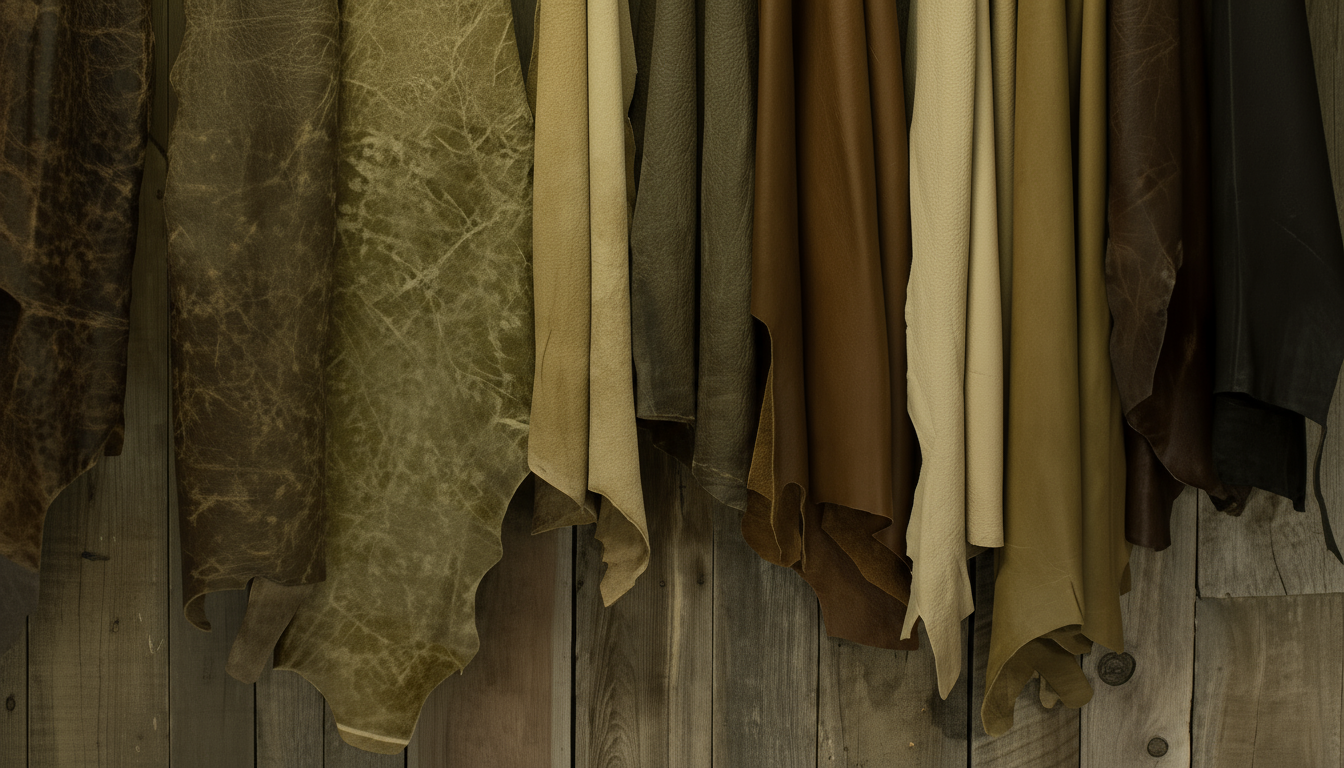
Why Choose Vegetable Tanned Leather?
Vegetable tanning is the oldest, over 5000 years, and the most intricate known process of tannin. Its earliest records can be traced back to ancient Egypt. This, however, was not limited to Egypt, a similar approach to tanning was evident in many countries but with the variation in the materials used for the tanning differed from country to country, ranging from the commonly used chestnut across Europe to the use of oak in the UK.
It's a three-step process that uses Phenol, an aromatic and organic compound made with leaves, roots, fruits and extracts from the barks, to tan the leather.
- The first step is to prep the hides, rehydrate it and eliminate the hair from the hides
- In the second step, the hide is tanned. This used to be a simple process in the past achieved with a string of pits containing tannin concentrations. Today however it is generally achieved with the introduction of drums to accelerate the tannin penetration. The pelts will go through a sequence of various strength tannins until the process is completed following which they are dried.
- In the final step, the tanned leather is protected by finishing it with combination of a range of oils, waxes and sealants. Dötch leather applies their exclusive and unique oil-based dye to finish the leather. This approach to tannin is safer and environment friendly in comparison to chrome tannin where Chromium is used which is very harmful to the environment
But why do you choose Vegetable Tanned Leather?
When you smell vegetable tanned leather, you are reminded of smelling a good wine. The wonderful aromas coming from the natural tannins that replace chrome in the tanning process. This is the old way of making leather.
Vegetable-tanned leather has longer durability
Vegetable-tanned leather lasts much longer than chrome tanned leather. As a matter of fact, you will notice that it will seem new, even after several years. As I am writing this article, I am travelling across Europe with a butterfly full-grain buffalo duffle that I picked up 4 years ago, it has few dents and scuff marks but that adds character to the bag. It was made with vegetable-tanned leather, and I cannot see anything on it that makes it look old.
It requires passionately waiting for days
The reason why vegetable tanned leather is more expensive than chrome tanned leather is that it takes longer time to make. The natural chemicals are not as effective as the heavy metals, thus taking a long time. A longer process means a more expensive product.
How sustainable is leather?
The leather used in the manufacturing process is the by-product of meat and dairy farming which if not used would be used in the landfill, why waste it when you can efficiently utilise the wastage. Secondly, with the make to order approach only the amount of leather required is used in making the products, therefore, reducing wastage. And finally, by avoiding the use of a harsh chemical to tan the leather you are reducing its human impact but most importantly restricting the spillage of hazardous waste into the environment. Therefore, making vegetable tanned leather the most sustainable leather available.
Real Leather vs Vegan Leather.
Progress is being made to find alternatives to genuine veg tan leather. We have seen the introduction of faux leather aka vegan leather and sold in the name of sustainable leather but before you purchase them please be aware they are made using synthetics, PVC & PU, which do not biodegrade.
Is vegan leather truly environmentally friendly?
In order to answer this lets first understand what the main compound is used in the making of vegan leather, PVC & PU. Also known as Poly Vinyl Chloride, it is a synthetic material derived from fossil fuels, which requires a large consumption of water in its making with the addition of toxic dyes that are hazardous to the environment. Moreover, the extraction of fossil fuel in itself has been proven time and again to be hazardous. Strides have been made in producing a new form of vegan leathers from cork, fruit leaves etc. this however still requires plastic-based adhesives to hold the fibres together. Even if it holds together it is a far cry from the durability of genuine veg-tanned leather.
Whereas real leather is a bi-product of meat & dairy farm which if not used will be sent to landfills. With a little bit of care, real leather products will last you for a very long time reducing the need to purchase new products. Small business doesn't have a vast amount of resources definitely not large quantities of leather. Therefore it is vital they make the most of every little resource they have and with the make to order approach Dötch is able to maximise utilisation of leather with minimal or no wastage. Moreover real veg tanned leather is natural, vintage with a unique patina that gets better in time in comparison to fast fashion products which only gets disposed when it breaks.



